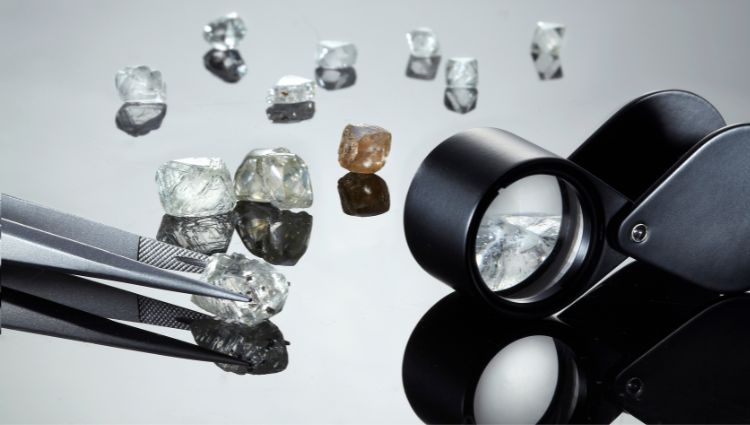
Beyond the Naked Eye: The Art of Identifying VVS Diamonds
What is a VVS Diamond?
VVS stands for Very Very Slightly Included. So, a VVS diamond has tremendously small inclusions not easily seen under a magnification of 10X. VVS diamonds are also eye-clean because reputably trained professionals can’t easily see the blemishes even with a loupe.
A VVS diamond is a diamond clarity measure on the GIA clarity scale, which is a step away from being an inwardly flawless diamond. This scale also grades the number of blemishes or flaws diamonds have. The diamond carat size chart also measures the diamond’s clarity along with grading the cut, color, and carat weight of the diamond. For more information, customers can click on this nacked URL, https://www.rarecarat.com/education/diamonds-guide/diamond-clarity.
What are the Levels of VVS Diamonds?
There are two levels of VVS diamonds, and these levels include VVS1 and VVS2 diamonds. VVS2 diamonds usually cost more than VVS1 diamonds, and they are more included than VVS1 diamonds.
As previously mentioned, VVS1 diamonds do not have visible inclusions under 10x magnification. However, the inclusions in VVS2 are slightly visible under 10x magnification even though they are still challenging to find. Also, VVS2 inclusions are typically slightly darker or slightly more prominent than VVS1 inclusions even though there is a slight difference.
For instance, a VVS2 diamond may possess a blemish closer to the table’s center, but a VVS1 diamond may have them closer to its edge. Other than that, a good example of a VVS diamond in an engagement ring is the 3CT F VVS2 oval engagement ring that the Olympic gymnast, Simone Biles, has.
The Clarity of VVS Diamonds
As previously mentioned, the diamond carat size chart measures the diamond’s clarity along with the grading of the cut, color, and carat weight of all diamonds. So, when it comes to the clarity of the VVS1 and VVS2 diamonds, the chart covers a category and two grades, i.e., VVS1 and VVS2. The differences in the VVS levels are tiny, and they have one similarity, which is they both have inclusions.
Very Very Slightly Included diamonds are third place when it comes to clarity, which is right after flawless and internally flawless diamonds. Nevertheless, the prices of VVS diamonds depend on the color, cut quality, carat weight, and shape. So, even if the shape, carat weight, and color are the same with VVS1 and VVS2, the clarity of a VVS1 diamond tends to be approximately 10% higher in cost than a VVS2 diamond.
Due to unseen inclusions by the naked eye in VVS diamonds, the best practice is to go lower on the GIA clarity scale. Customers can purchase a lower-graded clarity diamond that is eye-clean for a more affordable price. Consulting a proven and trustworthy jeweler is key to ensuring customers are getting a legit VVS diamond, and Rare Carat is the way to go.
Why Choose Rare Carat
Located in New York, New York, and Southfield, Michigan, Rare Carat is the number one source of unbiased advice for diamond engagement rings. This company compares more than a million lab-grown and natural diamonds at trusted retailers to save customers money. They also do free gemologist checks on GIA-certified diamonds, and they have a 4 C’s Diamond Buying Guide.
Customers won’t go wrong with Rare Carat, and their work speaks for itself. They have earned a high number of 4.9 out of 5-star review ratings in both Trustpilot and Google Business Profile. Rare Carat has also become the number one diamond site in America in only five years now. Additionally, Rare Carat is so trustworthy that they offer a 100% money-back guarantee.
Conclusion
The Very Very Slightly Included diamond has very small inclusions not easily seen under 10X magnification, and it is eye-clean because reputably trained professionals can’t easily see the blemishes even with a loupe. Also, the diamond clarity measure on the GIA clarity scale as well as the diamond carat size chart measures the internally flawless nature of the diamond along with grading the number of blemishes or flaws diamonds have. The diamond carat size chart just goes beyond the clarity by measuring the cut, shape, etc. However, it is critical to work with a trusted jeweler to ensure they get top-notch quality and are not swindled when it comes to VVS levels and more.

Comments are closed.